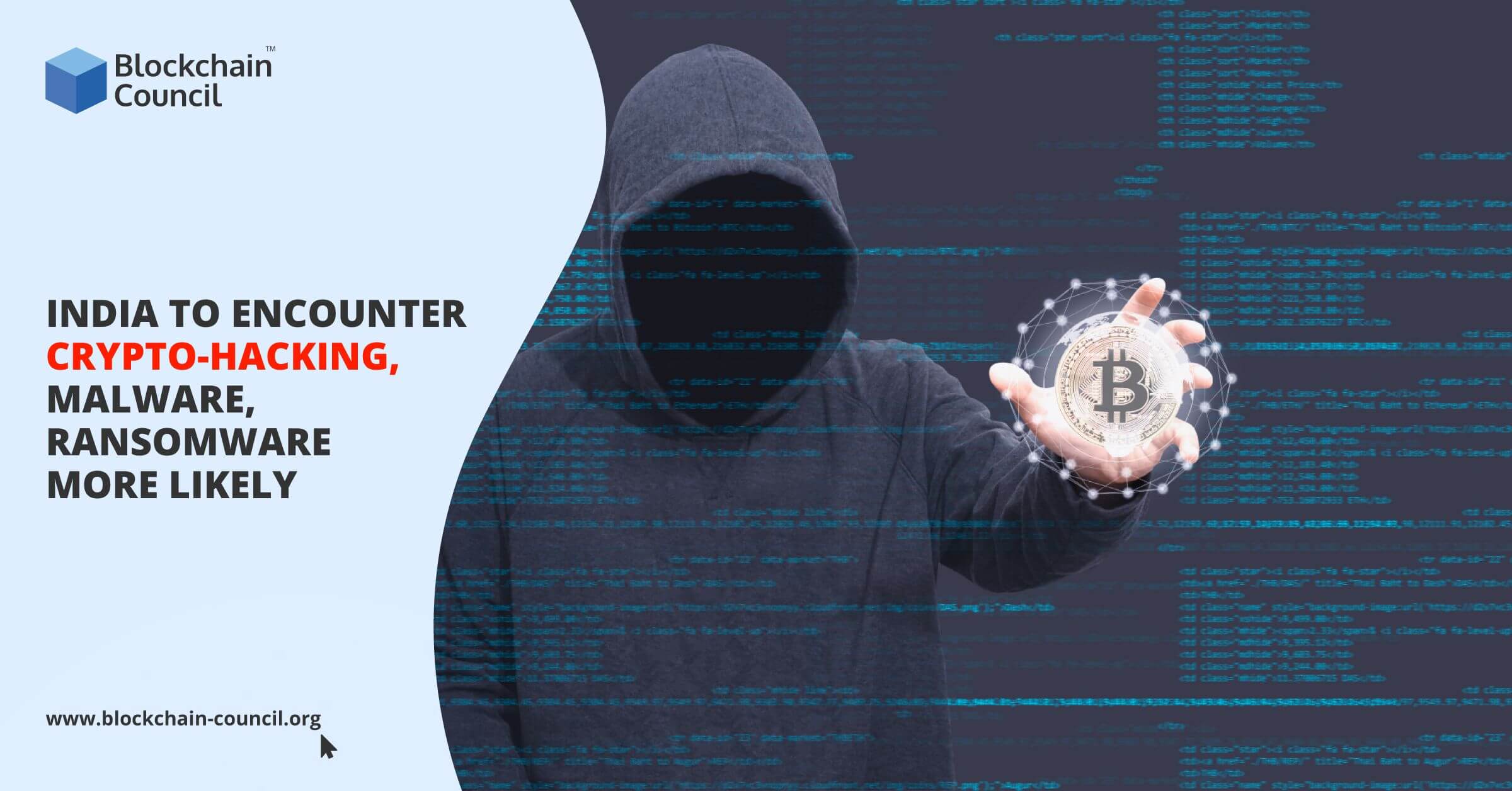
- Toshendra Kumar Sharma
- August 11, 2020
Crypto Malware, crypto hacking, and malware are the buzzwords that are prevailing nowadays, and unfortunately, India encountered the highest incidence of such attacks across the world. In this article, we will talk about the types of crypto hacking attacks, detection, and prevention measures and will focus on Microsoft’s recent cybersecurity report.
Table of Contents
- Overview
- Crypto Malware and Crytojacking- New Buzzwords in Crypto Space
- Cryptocurrency Mining Attacks Continues to Hit India
- How to Detect and Prevent Cryptojacking
- Concluding Lines
Overview
Cryptojacking, also known as malicious cryptomining, can be defined as the unauthorized and illegal activity that uses somebody else’s device to mine cryptocurrency. In other words, it is an online threat that hides on a device and uses the machine’s resources to “mine” online money, i.e., cryptocurrencies such as Bitcoin, Ethereum, etc. What attackers (or hackers) do is they either ask the victim to succeed on a malicious link that loads cryptomining code or by just infecting an online ad with JavaScript code that executes automatically once loaded in the victim’s browser. The slower performance or lags in execution at the victim’s end denotes that cryptojacking has taken place.
According to Microsoft’s recent cybersecurity report, India’s encounter rate for such attacks is 4.6 times higher than the global and regional average. Moreover, Microsoft Threat Protection Intelligence teams warn that cybercriminals are taking hold of COVID-19 concerns, adapting, and updating attack methods.
Crypto Malware and Cryptojacking- New Buzzwords in Crypto Space
As cryptocurrency continues to rise, a new type of malware has gained popularity, and that is crypto-malware. Crypto-malware is a buzzword because of the fact that it only requires CPU cycles to do its best work. This type of malware is also recognized as a “silent threat whose aim is not to just steal crucial information but rather to persist for as long as possible, simply mining in the background. Cryptojacking, on the other hand, is another form of criminal cryptomining where attackers hijack victims’ systems through web servers. In this, javascript is injected into web servers, and when a user visits that particular web page, javascript starts to run in the browser, which turns the device into a crypto miner.
Cryptocurrency Mining Attacks Continues to Hit India
According to the recent report, crypto-hacking, malware, ransomware, and drive-by download attacks have high cybersecurity challenges in India, where findings were derived from several Microsoft data sources eight trillion threat signals analyzed by Microsoft each day, from January to December 2019.
According to Mary Jo Schrade, Assistant General Counsel, Microsoft Digital Crimes Unit, Microsoft Asia, “the Microsoft Security Endpoint Threat report aims to create a better understanding of the evolving threat landscape and help organizations improve their cybersecurity posture by mitigating the effects of increasingly sophisticated attacks.”
Although the Microsoft report states that drive-by download attacks have declined overall in the region, India still shows a rise of 140% in these types of attacks. It was noted that Singapore, India and Hong Kong encountered the highest incidence of such attacks.
Keshav Dhakad, Group Head & Assistant General Counsel-Corporate, External & Legal Affairs, Microsoft India, also expressed his views regarding cybercriminals and stated that,
“Cybercriminals capitalize on drive-by download techniques to target the organizations and end-users with the objective of stealing valuable financial information or intellectual property. This is a likely reason for regional business hubs recording the highest volume of these threats.”
Amid the coronavirus pandemic, Microsoft team has encountered that almost every country across the globe has faced some kind of themed attack, and the volume of such successful attacks seems to be exponentially growing.
Dhakad commented on such COVID-19 themed threats and explained that threats are mostly retreads of existing attacks that are altered to tie to the pandemic which indicates that attackers have been turning their existing infrastructure, such as ransomware, phishing, and other malware delivery tools, including COVID-19 keywords, to capitalize on people’s fear. Once users click on such malicious links, “attackers can infiltrate networks, steal information, and monetize their attacks.”
How to Detect and Prevent Cryptojacking
From the above discussion, it is clear that there is an urgent need to detect and prevent crypto mining attacks from victims. Let’s briefly explore how this can be done.
Here are a few ways of detecting crypto-jacking such as:
-
Check for increased levels of CPU usage. Regularly scan for malware.
-
Be aware of the decrease in computing performance.
-
Don’t overlook overheating devices.
-
Check for coding changes on your websites.
-
Follow crypto news and stay updated to understand information related to cryptojacking.
As it’s always said, prevention is better than cure; similarly, in the case of crypto jacking. Here are a few ways to prevent crypto jacking.
- Using extensions that block domains associated with cryptojacking scripts and restrict permission for illegal browser extensions from gaining access.
- Stay updated about cryptojacking to be watchful towards malicious links and websites.
- Restricting websites that deliver scripts to prevent in-browsing crypto jacking.
Concluding Lines
The Microsoft report also mentioned that apart from India, users in Sri Lanka and Vietnam also face a high incidence of such attacks, which indicates that there is an urgent urge to improve cybersecurity posture and cryptojacking sophisticated attacks.
To get instant updates about Blockchain Technology and to learn more about online blockchain certifications and become a blockchain expert, check out Blockchain Council.





































































 Guides
Guides News
News Blockchain
Blockchain Cryptocurrency
& Digital Assets
Cryptocurrency
& Digital Assets Web3
Web3 Metaverse & NFTs
Metaverse & NFTs
